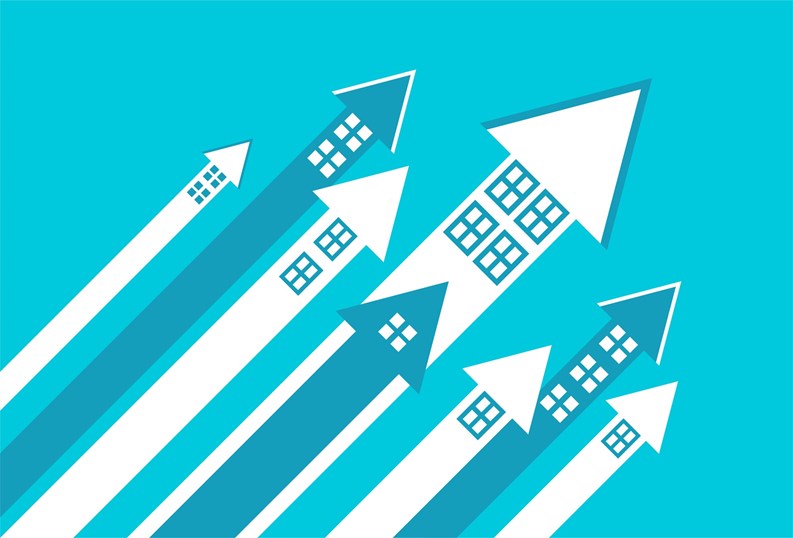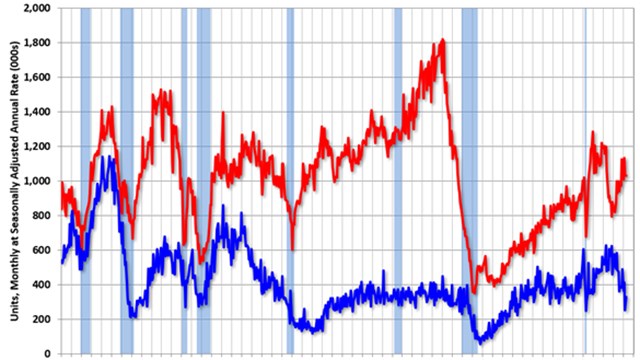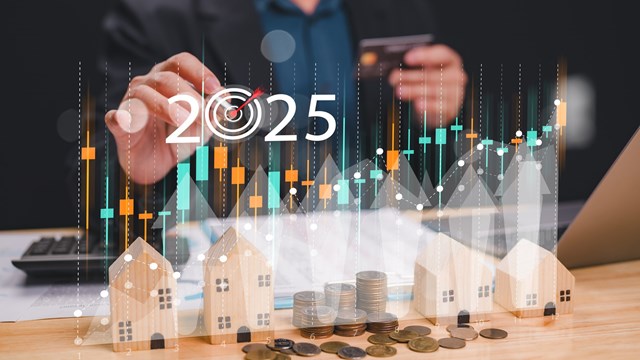With both real estate and rental prices rising quickly over the last two years, U.S. households that don’t currently own their home are facing a major affordability crunch. A new study by Roofstock adds some interesting data to the discussion, identifying which locations in the country have the highest rent-to-price ratios.
What’s a Rent-to-Price Ratio?
A location’s rent-to-price ratio is one metric potential homebuyers can use to assess whether it makes more sense to try to purchase a home in their area, or continue renting. With both real estate and rental prices rising quickly over the last two years, renters are facing a major dilemma: try to stretch their budgets to purchase homes that have grown more expensive, or live with rising rents and risk home prices climbing even further out of reach.
In markets where the ratio of rents to the cost of homeownership is higher, purchasing a home makes more sense. In locations with lower rent-to-price ratios, where costs of homeownership exceed rents, real estate may be overvalued. For this study, researchers calculated the ratio of annualized median rent from HUD to Zillow’s current Home Value Index, then ranked metros accordingly.
With a median rent approximation of $2,045 and median home price of $618,517, the NY metro area has a rent-to-price ratio of 3.97%. Nationally, that figure is 4.80%.
High Demand = Higher Prices
The residential real estate market took off shortly after the COVID-19 pandemic began. Boosted by increased savings, low interest rates, and government stimulus programs - and motivated by a desire for more living space - buyers rushed into the market. The increased competition sent home prices to record heights. But now, with interest rates rising in efforts to cool the market and higher prices being a new normal, many would-be buyers have been priced out.
This state of affairs has left more prospective buyers in the rental market, and as a result of increased demand, rents have spiked dramatically over the last year and a half. The early months of the COVID-19 pandemic in 2020 saw rents remain flat while eviction moratoriums and federal rental assistance programs were in place. But with those programs expired and heightened competition for rentals, rents have taken off: The median rent rose by 17.6% in 2021, and is already up by another 6.7% in 2022.
For homeowners and landlords whose costs are locked in, the current market has been a boon. Homeowners have gained an estimated $6 trillion in equity during the pandemic. Landlords—especially larger corporate owners—are benefiting from greater profit margins as they raise rents to account for market conditions.
But non-homeowners face difficult choices in a market like this one—and based on recent trends, the squeeze for renters could continue. The rate of increase in home prices exceeded the rate of growth for rents even before the pandemic took hold, but recent conditions have widened the gap. This poses a dilemma for renters: try to stretch their budgets to purchase homes that have grown more expensive, or live with rising rents and risk home values climbing further out of reach.
Cities With the Highest Rent-To-Price Ratios
To find the locations with the highest rent-to-price ratios, Roofstock crunched numbers from the Department of Housing and Urban Development (HUD), Zillow, and the Census Bureau. The rent-to-price ratio was calculated as the ratio of annualized median rent from HUD to Zillow’s current Home Value Index. For additional context, the monthly mortgage payment for a median-price home was calculated assuming a 30-year fixed mortgage, 20% down payment, and a 5.22% interest rate.
Most U.S. locations with the highest rent-to-price ratios are found in the South and Midwest. At the state level, some of the most affordable places in the U.S. to buy a home, like West Virginia and Mississippi, lead the country in rent-to-price ratio. In contrast, states in the Mountain West where real estate values have increased rapidly in recent years, like Montana, Utah, and Idaho, have lower ratios. At the local level, cities in the Rust Belt and other areas where housing is available and inexpensive tend to have higher rent-to-price ratios that point renters toward purchasing a home.
Here is a summary of the data for the New York-Newark-Jersey City, NY-NJ-PA metro area:
- Rent-to-price ratio: 3.97%
- Median rent approximation: $2,045
- Median home price: $618,517
- Monthly mortgage payment for a median-price home: $2,723
For reference, here are the statistics for the entire United States:
- Rent-to-price ratio: 4.80%
- Median rent approximation: $1,435
- Median home price: $355,852
- Monthly mortgage payment for a median-price home: $1,567
For more information, a detailed methodology, and complete results, you can find the original report on Roofstock’s website: https://learn.roofstock.com/blog/cities-highest-rent-to-price










Leave a Comment